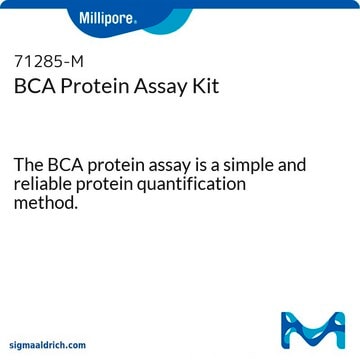R1756
Rhodanese from bovine liver
Type II, essentially salt-free, lyophilized powder, 100-300 units/mg solid
Sinónimos:
Thiosulfate Sulfur Transferase, Thiosulfate:cyanide sulfurtransferase
Seleccione un Tamaño
434,00 €
Seleccione un Tamaño
About This Item
434,00 €
Productos recomendados
tpo
Type II
Formulario
essentially salt-free, lyophilized powder
actividad específica
100-300 units/mg solid
temp. de almacenamiento
−20°C
¿Está buscando productos similares? Visita Guía de comparación de productos
Aplicación
Acciones bioquímicas o fisiológicas
Definición de unidad
Código de clase de almacenamiento
11 - Combustible Solids
Clase de riesgo para el agua (WGK)
WGK 3
Punto de inflamabilidad (°F)
Not applicable
Punto de inflamabilidad (°C)
Not applicable
Equipo de protección personal
Eyeshields, Gloves, type N95 (US)
Elija entre una de las versiones más recientes:
Certificados de análisis (COA)
¿No ve la versión correcta?
Si necesita una versión concreta, puede buscar un certificado específico por el número de lote.
¿Ya tiene este producto?
Encuentre la documentación para los productos que ha comprado recientemente en la Biblioteca de documentos.
Filtros activos
Nuestro equipo de científicos tiene experiencia en todas las áreas de investigación: Ciencias de la vida, Ciencia de los materiales, Síntesis química, Cromatografía, Analítica y muchas otras.
Póngase en contacto con el Servicio técnico








